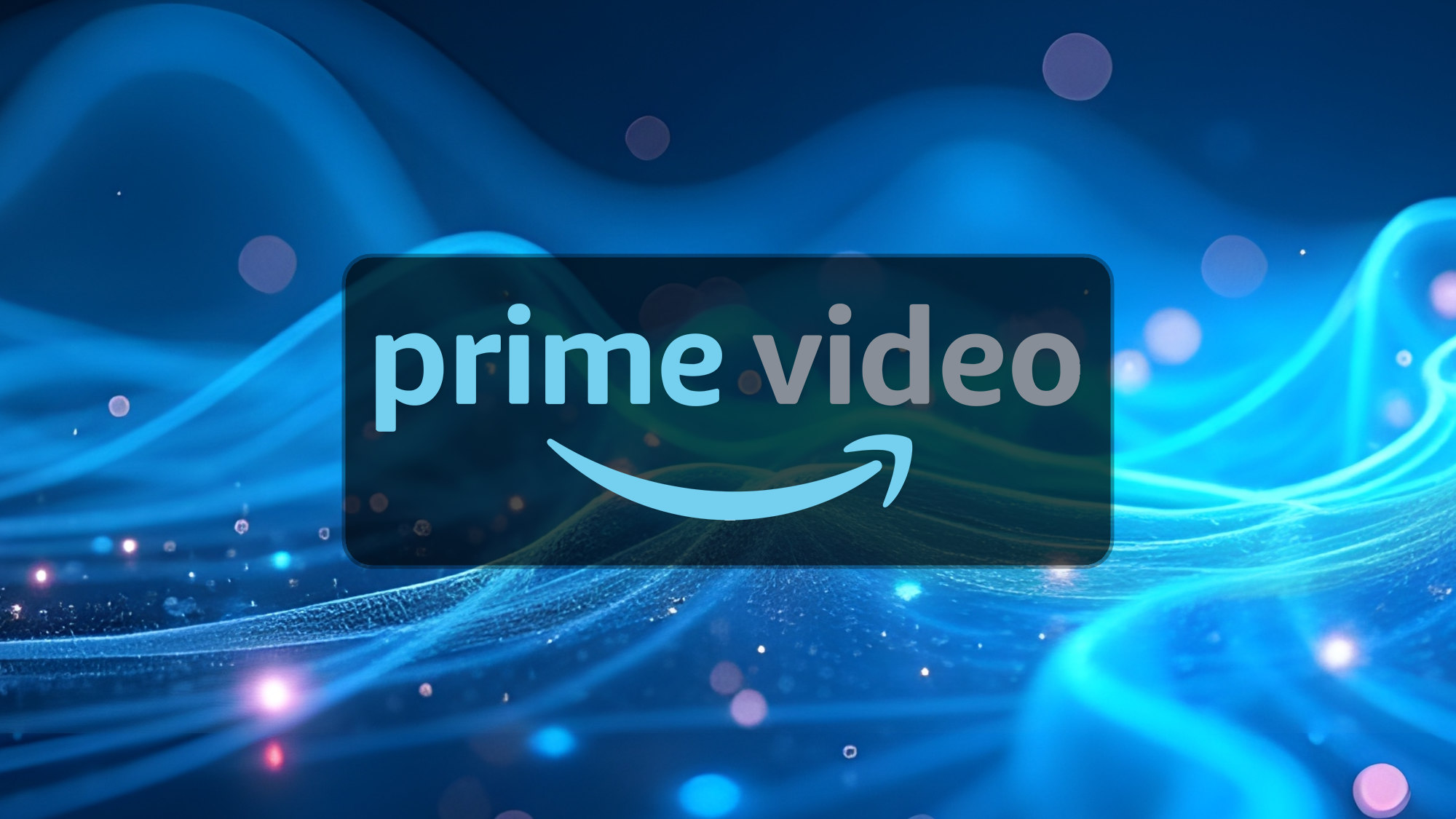Pixel 4 vs. Pixel 3 Camera Face-Off: How Much Better Is It?
Here’s how the cameras compare

Google's Pixel phones place their camera features front and center, and in our Pixel 4 review, we found the new model to be no exception. The latest flagships from Google augment the company's already impressive software-powered photography features with a second rear camera. The result is a device that is among the best camera phones.
But is the Pixel 4's camera a big improvement over what Google did with last year's Pixel 3? The Pixel 3 remains on sale, with Google slashing its price to $499 — that's $300 less than the starting price for the Pixel 4. While Google's new phone boasts other improvements — including face unlock, a faster processor and motion gestures— budget-minded smartphone shoppers might consider the Pixel 3 a good option if it's camera can keep pace with the Pixel 4's newer photo features.
To find out just how big a difference there is between the cameras on the Pixel 4 and Pixel 3, we used both phones to shoot a series of photos, paying extra attention to some of the new features Google introduced with the Pixel 4. For this face-off, we used a Pixel 4 XL and a Pixel 3 XL, though you can expect the same camera performance from the smaller versions of each respective Pixel.
Pixel 4 cameras: What's different
Before we dive into the photo comparisons, it's worth looking at just what has changed with the cameras on the Pixel 4. The most noticeable difference appears when you flip the phone over. After years of coming out with single-lens cameras, Google has added a second lens to the back of the Pixel 4 — a 16-MP telephoto lens joins the 12.2-MP main camera. As a result, the Pixel 4 features a 2x optical zoom, while the Pixel 3 relies entirely on Google's AI-powered Super Res Zoom feature to keep details sharp in zoomed-in photos.
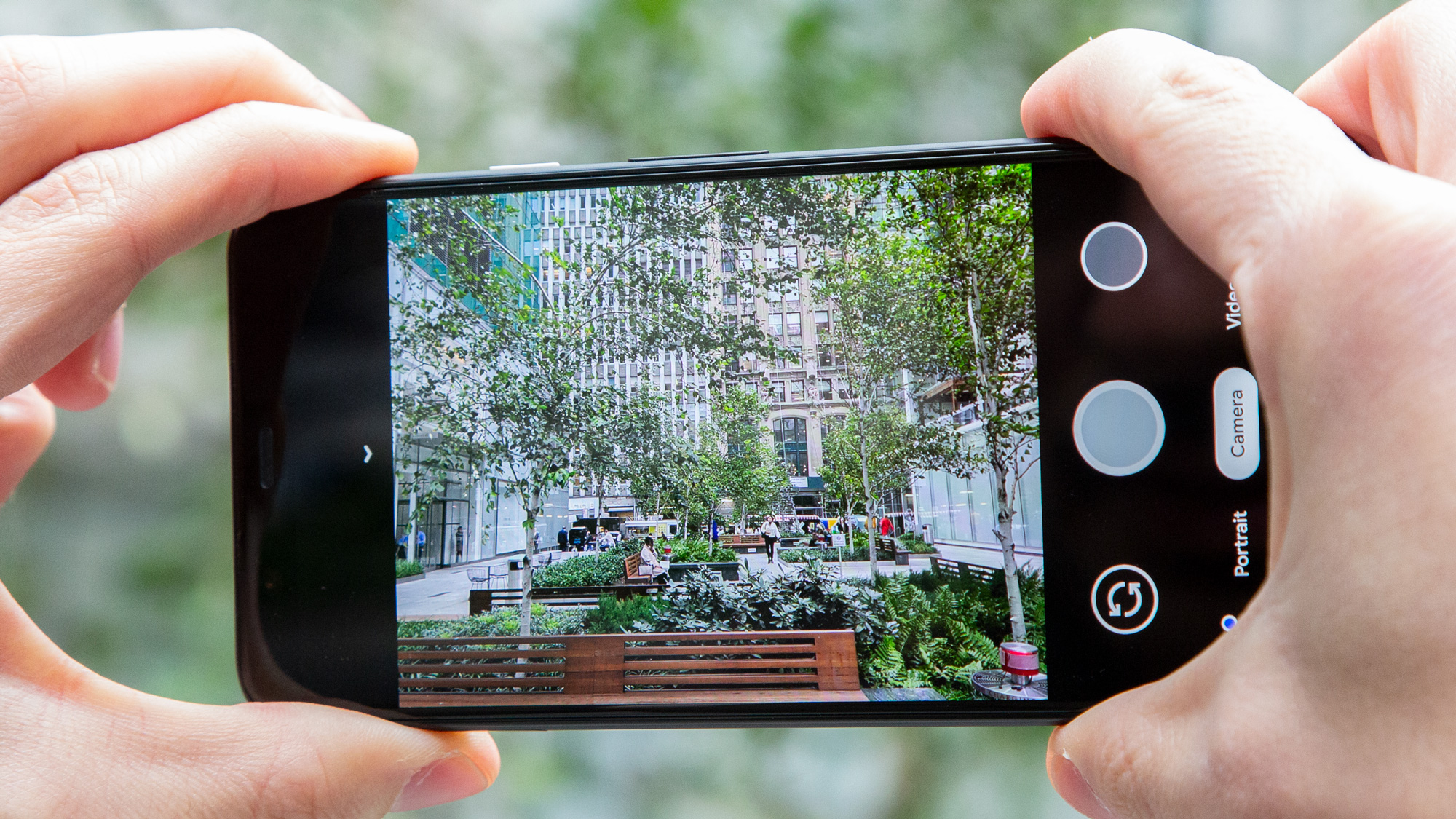
While the main lens on both the Pixel 3 and Pixel 4 have the same megapixel rating, the apertures are slightly different. The f/1.7 aperture on the Pixel 4 lets in a little more light than the Pixel 3's f/1.8 aperture.
Up front, the Pixel 4 loses a lens. There's just a single 8-MP selfie cam on the new Pixels, while the Pixel 3 and 3 XL featured dual 8-MP front cameras.
Google didn't stop with hardware changes for the Pixel 4's camera. The Night Sight low-light photography feature introduced with the Pixel 3 has been improved to the point where Google says you can now take pictures of the night sky. Dual exposure controls let you tweak brightness and shadows on the fly, and the Pixel 4's viewfinder shows off what your HDR+ images will look like before you snap a photo. AI-powered white balance uses machine learning to color correct images shot by the Pixel 4, and Portrait promises better background blurs than what you get with the Pixel 3.
Get instant access to breaking news, the hottest reviews, great deals and helpful tips.
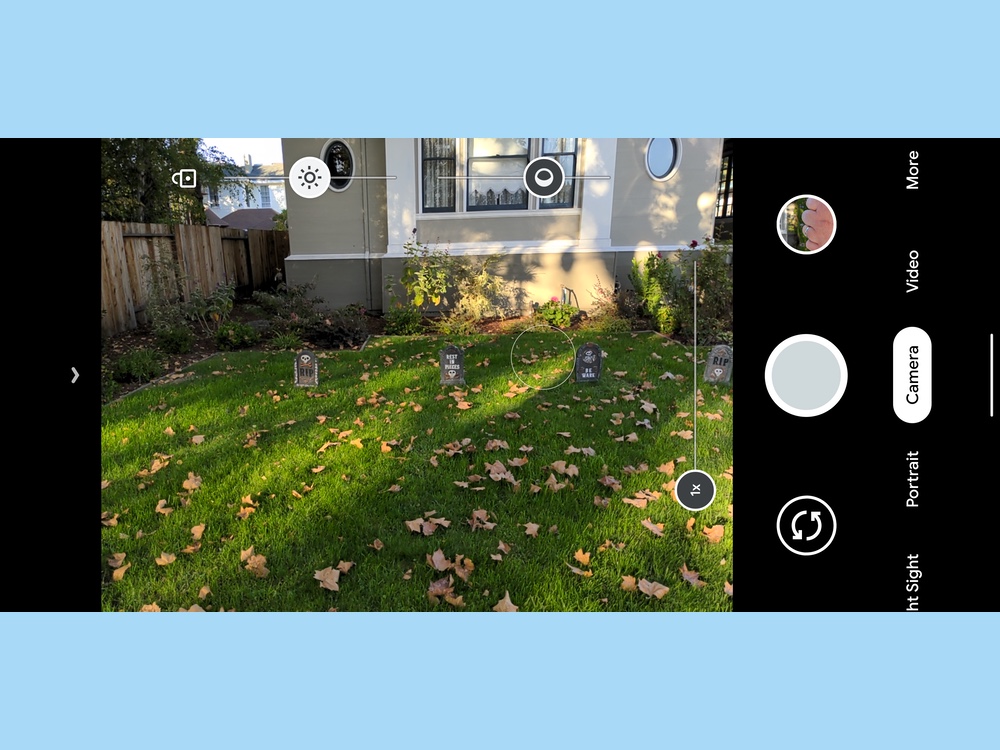
Here's what those changes mean to the photos produced by the Pixel 4 XL and Pixel 3 XL.
Night Sight, Pumpkins
We have some disagreement in the Tom's Guide office on this Night Sight-aided photo of some white plastic pumpkins my wife and daughter bedazzled the heck out of it. It's a challenging shot to begin, since it's lit entirely by a string of purple and orange lights, with the orange lights located in the back of the photo adding some severe backlighting.
I'm not sure the Pixel 3 XL ever overcomes that backlighting with its photo. Some of the details of the decorated pumpkins — particularly the tall one in the middle — remain lost in shadow and the light bulbs look a little blown out to me. The Pixel 4 XL shows off more detail to my eye, and the lighting feels properly subdued. That said, my colleague Adam Ismail argues that the Pixel 3 XL handles the white balance better, while the Pixel 4 XL's shot is too cool for his tastes.
Winner: Pixel 4
Breakfast, Indoors
At first glance, the shots of my morning cereal look pretty identical between what the Pixel 3 XL and Pixel 4 XL captured. But I think the colors in the Pixel 4 XL's shot are a little more true to life. The blueberries seem bluer and the bowl in the Pixel 4 XL's shot is the same shade of white it is in real life and doesn't sport the blueish hue the Pixel 3 XL added.
To compensate for some unforgiving lighting from an overhead fixture, the Pixel 4 XL loses some of the shifting tone of my kitchen table and overly smooths out the grain in the background. But the reflecting glare from the light isn't as harsh as it is in the Pixel 3 XL's shot.
Winner: Pixel 4
Flower, Outdoors
The differences between the two cameras are less pronounced when we move outdoors on a bright, sunny morning. There's nothing really separating the shots of me getting up-close and personal with one of my neighbor's roses. The Pixel 3 XL produces a more vibrant shade of yellow, while the Pixel 4 XL's color is probably more accurate. I don't dislike either effort, and if we removed the labels, I couldn't really tell you which camera shot which picture.
Winner: Draw
Shadows, Halloween Decorations
I took this photo of a neighbor's Halloween-themed yard, not because it illustrates much difference between the two phones — everything looks pretty similar, though the shadows seem a little less pronounced on the Pixel 4 XL's effort — but because it gave me the chance to play around with the Pixel 4 XL's dual exposure feature. Tap the Pixel 4 screen, and two sliders appear — one to adjust for shadows and the other to make the photo brighter. You can see the changes applied in the viewfinder before you capture the shot.
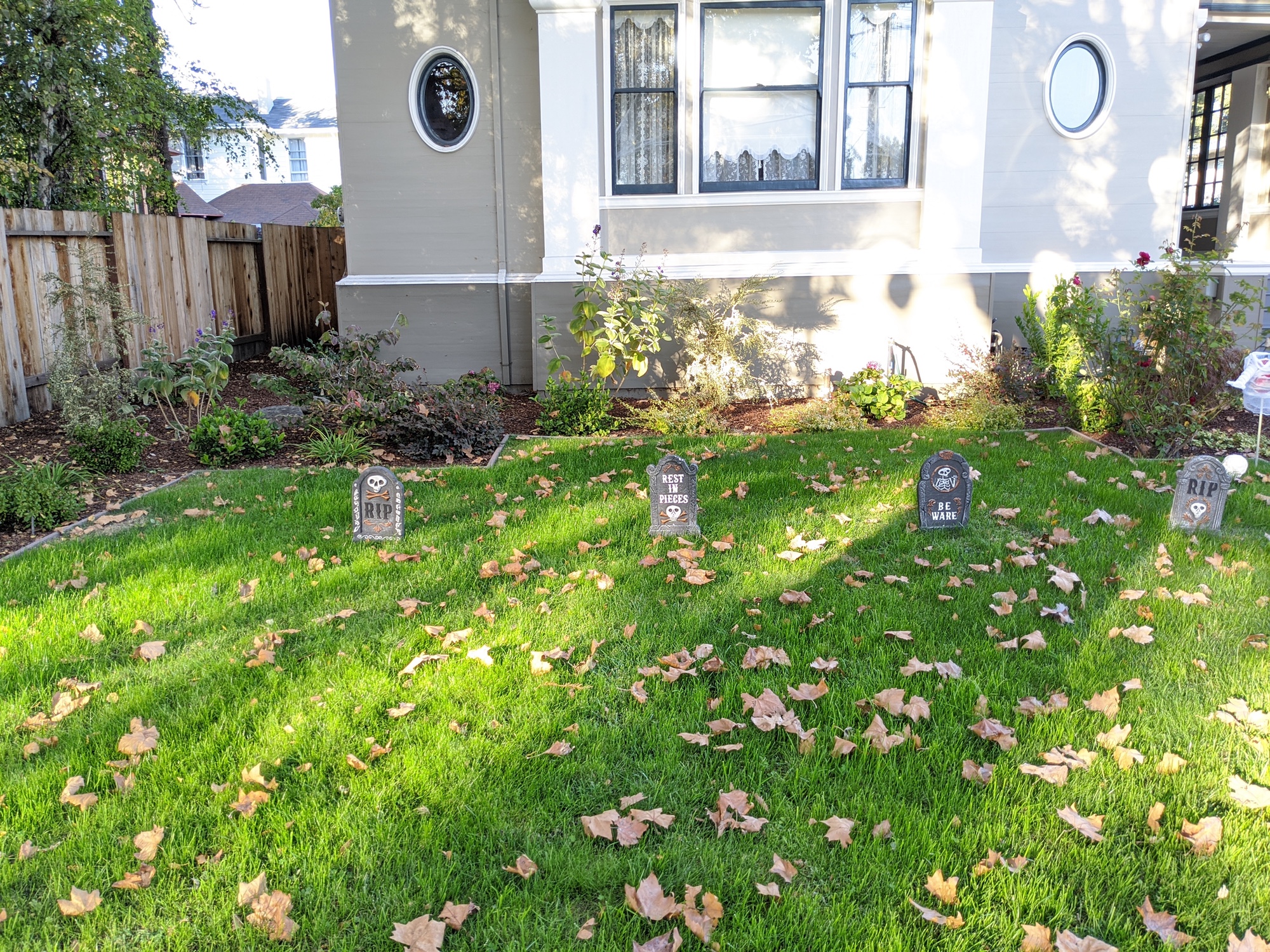
I tried to use dual exposure to play down the shadows on the lawn even further and call out the decorative tombstones. The shadows are certainly no longer as prominent as they once were in my dual exposure-adjusted shot, and I think the "Rest in Pieces" tombstone is easier to read. I overdid the brightness adjustment, though, causing the house to become too over-exposed, something I didn't notice until I got home and downloaded the photos to my computer. That makes me wonder if dual exposure will be of much use to anyone other than mobile photographers with the keenest of eyes; I'd certainly worry that my tinkering might do more harm than good.
Winner: Pixel 4
Zoom Shot (2x and 8x)
We begin to see more of an edge for the Pixel 4 XL when we put its telephoto lens to use. On the campus of the University of California, I zoomed in on Sather Tower, using a 2x zoom on both phones. The Pixel 4 XL's telephoto lens gets me a little closer than the Pixel 3 XL, which is relying entirely on a digital zoom aided by Google's Super Res Zoom feature. That keeps most of the details in focus in the Pixel 3 XL's shot, without the fuzziness you'd see in optical zooms that don't benefit from computational photography. But I do think the surrounding details — the trees, the buildings, the clusters of homecoming balloons — have a sharper edge in the Pixel 4 XL's photo.
The Pixel 4 XL really stands out when we zoom in even further, to an 8x zoom on Sather Tower. The Pixel 4 XL has to use Super Res Zoom on this shot, but it's a hybrid zoom aided by the telephoto lens. For that reason, the Pixel 4 XL's image looks much sharper to me. The numbers on the clock stand out a bit more than they do in the Pixel 3 XL's shot, and you can still see the individual bells in the bell tower. The tree branches that remain in the Pixel 4 XL's photo are fuzzier than they were in the 2x zoom, but that's to be expected when you blow past the limits of an optical zoom. If you're the kind of person who likes to zoom in on details, the Pixel 4 XL's superiority is on full display here.
Winner: Pixel 4
Night Sky
I kept Night Sight mode turned on for both cameras, when I headed out to a nearby shoreline to snap some photos of the night sky. On the plus side, it was a clear evening when I took this photo and I could clearly make out some constellations with the naked eye. (I think I have my camera trained on the Cassiopeia constellation, but I welcome any gentle correction from anyone with a better grasp of astronomy and star-gazing.) On the down side, while I went to an unlit area of the shore, I still live in an urban setting with a lot of light pollution, so I'm not sure I'll ever be able to take a photo that shows off the Pixel 4 XL's reported ability to capture the Night Sky unless I head for the woods.
Take this Pixel 4 XL shot, which is not one I’d ever share with anyone. You could even make the case that the Pixel 3 XL's shot captures just as much detail. In fact, there are even more white pinpoints where stars should be in the Pixel 3 XL's effort. The difference is in the sky itself. The Pixel 3 XL turns the sky into an inky, smudgy mess with a lot of noise when you zoom in. The Pixel 4 XL depicts the sky in a bluer shade of black that's more consistent throughout the image. I don't care for either shot, but I think the Pixel 4 XL gets the edge here.
Winner: Pixel 4
Portrait Shot
Does the Pixel 4 XL handle blurs on portrait shots better than its predecessor? Looking at this portrait of my daughter, I'm not convinced. The photos match each other in terms of color, but I just don't see the promised improvement in separating the subject of my photo from the blurred background. My daughter's hair and its many loose strands complicate matters, and if you zoom in one either photo, you're going to find areas where her hair gets caught up in the bokeh effects. It's particularly noticeable with that tuft of hair just under her ear on the left side of the Pixel 4 XL photo -- it got blurred while the Pixel 3 XL left that part of her hair alone. The Pixel 4 XL also seems to be more aggressive with smoothing out faces, as you see fewer freckles than there are in the Pixel 3 XL shot.
I don't think the Pixel 4 XL portrait is bad by any means. But it's not appreciably better than the Pixel 3 XL's. And that's disappointing given the promised changes.
Winner: Draw
Selfie, Portrait
Turning to the front camera but keeping portrait mode on, both the Pixel 3 XL and Pixel 4 XL managed to separate me from the orange tree behind me in their respective selfies. Neither my beard nor my hair got caught up in the blur, and both phones could determine where my green shirt ended and the green leaves began. The problem with the Pixel 4 XL's selfie is that my skin looks too smooth and the colors seem overly saturated. The Pixel 3 XL's shot is a better representation of what I actually look like, though it washed out the color of my shirt a little bit.
Winner: Pixel 3
Group Selfie
I had my daughter join me in a selfie shot to see if the Pixel 4's single front camera performs differently when you try to squeeze more people into your self portrait. The answer: not really, because the Pixel 4 front camera has a wider field of view than the default setting of the Pixel 3 XL's dual front cameras. The same problem with over-smoothed skin on the Pixel 4 XL's shot remains, though, as the Pixel 3 XL produces a more natural looking photo that better handles the difficult shadows cast by the sun on the morning I took both photos.
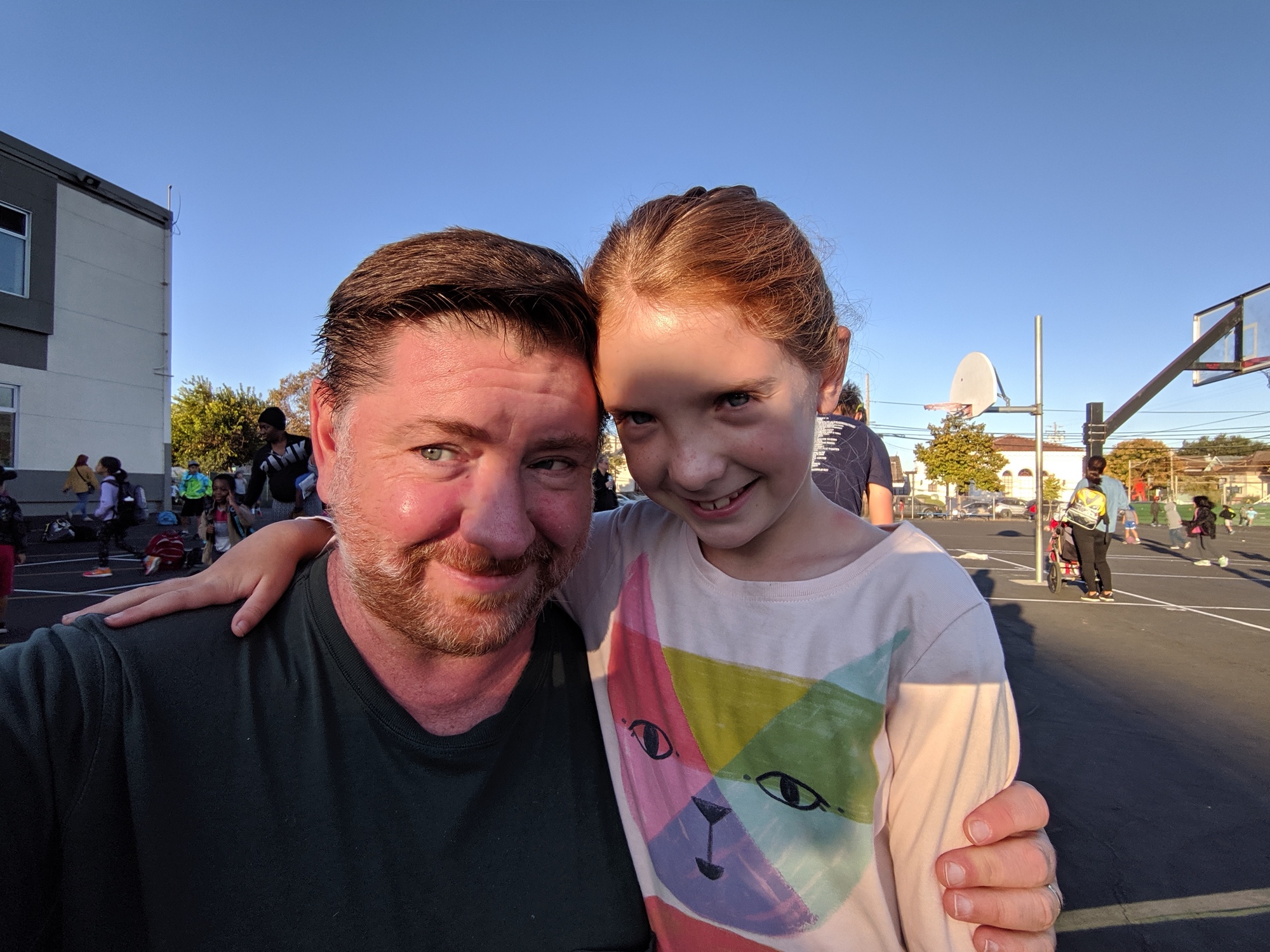
And it's not as if the Pixel 3 XL isn't capable of capturing more of the background (or more people squeezing into the shot if that's what you prefer). I switched to the wider front lens on Google's older phone and got pretty much the same perspective that the Pixel 4 XL's single front camera produced, right down to the same problematic shadows and less natural skin tones. The bottom line here is that the Pixel 3 XL offers a more flexible front camera that works best when you favor the lens with the more narrow field of view.
Winner: Pixel 3
Bottom line
Overall, the Pixel 4 XL produces the better photos in our face-off. The rear cameras recreate more accurate colors, the telephoto lens expands the phone's photographic capabilities and shots in low-light look more consistent and detailed. I'm not seeing the promised improvements in portrait shots, though, and I think the Pixel 4 XL's front camera is a step back, at least based on the selfies I've snapped so far.
Many different features make the Pixel 4 and Pixel 4 XL more compelling buys than their predecessors. But if your primary concern is the camera on your phone, the Pixel 4 represents a step forward from the Pixel 3, though not a huge leap.
Philip Michaels is a Managing Editor at Tom's Guide. He's been covering personal technology since 1999 and was in the building when Steve Jobs showed off the iPhone for the first time. He's been evaluating smartphones since that first iPhone debuted in 2007, and he's been following phone carriers and smartphone plans since 2015. He has strong opinions about Apple, the Oakland Athletics, old movies and proper butchery techniques. Follow him at @PhilipMichaels.

